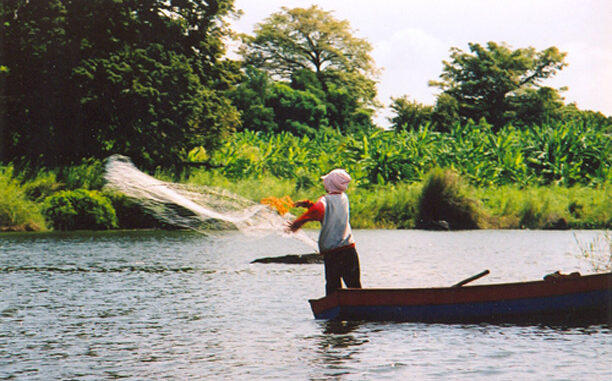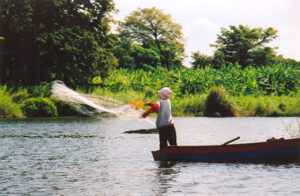

Andrew Payti
Fishing is just one of the many activities to enjoy on Lake Nicaragua.
When Spanish conquerors first saw the enormous Lake Nicaragua, with its large waves and powerful storms, they thought that it was a sea. In fact, they named it la Mar Dulce (Sweet Sea or Freshwater Sea). Even though it’s not very deep—just forty-two feet in average depth—Lake Nicaragua is the largest lake in Central America and one of the largest in Latin America.
Known to the indigenous groups as Cocibolca, and to inhabitants of the city of Granada as Lago de Granada, Lake Nicaragua is home to the volcanic islands of Ometepe and Zapatera. This distinctive lake actually has a chain of volcanoes running through it, resulting in the formation of many beautiful and exotic islets. One of the islets is called Monkey Island, thanks to its large population of capuchin and howler monkeys. But what is most unusual about Lake Nicaragua is its unique inhabitant—the bull shark. Scientists originally thought that the sharks must have been trapped in the lake that was formed when volcanic eruptions filled in what was once a large bay along the Pacific Ocean. However, in the 1960s scientists discovered that the sharks actually could travel between Lake Nicaragua and the Caribbean Sea by making the 118-mile trek up and down the rapids of the San Juan River—sometimes in as little as seven days! Unfortunately during the dictatorship of Anastasio Somoza, a Japanese shark fin processing plant was allowed to be built on the banks of the San Juan River, essentially obliterating the shark population. The bull shark is now more or less a legendary figure even though there are still occasional sightings.
Although the sharks may still call Lake Nicaragua home, the lake continues to be a popular destination for fishing, boating, kayaking, surfing, and swimming. For those who prefer to participate in land-based activities, the shores of Lake Nicaragua as well as its islands and islets provide plenty of opportunities for hiking, horseback riding, and wildlife viewing.
Explore More:
1. The article states that Lake Nicaragua is one of the largest lakes in Latin America. Do you know which lake is the largest in Latin America? If not, do a search to find out.
2. Nicaragua is often called el país de lagos y volcanes. You learned about Lake Nicaragua in the article. Do some research to learn about the other major lake in Nicaragua. Then see how much you can discover about Nicaragua’s active volcanoes. You can use this chart to help organize your research findings and to prepare a presentation to share with your Spanish and science classes.
Share What You Know:
The United States is home to the Great Lakes. How many lakes are there? What are the names of these lakes? Which states border the lakes? One of the Great Lakes is the largest lake in North America. Do you know which one?